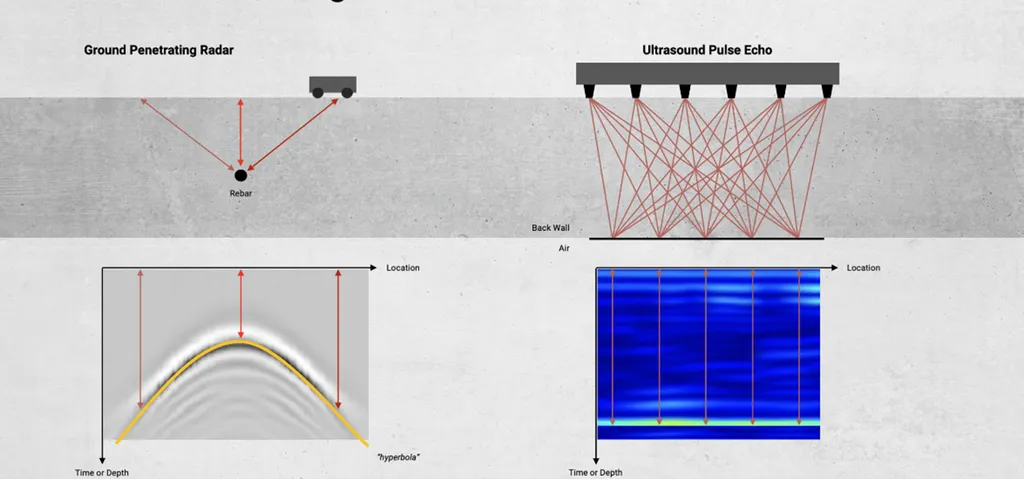In a groundbreaking development for the construction industry, researchers have unveiled a novel approach to identifying and quantifying damage in steel-concrete composite structures. Led by Li Xiuquan, the study introduces a method that leverages ultrasound CT (Computed Tomography) imaging to detect interface delamination, a critical issue that has long challenged traditional inspection techniques. This research, published in the journal *Jianzhu Gangjiegou Jinzhan* (Advances in Structural Engineering and Mechanics), promises to enhance the safety and longevity of infrastructure, particularly in the energy sector.
The challenge of accurately identifying internal defects in steel-concrete composite structures has been a persistent hurdle. Traditional methods often fall short, leading to potential structural vulnerabilities. Li Xiuquan and his team addressed this by developing a new ultrasound CT imaging technique, which provides a detailed and precise visualization of interface damage. “Our method offers a significant advancement in the accuracy of defect detection,” said Li Xiuquan. “By using ultrasound CT imaging, we can now quantify the extent of delamination with unprecedented precision.”
A key innovation in this research is the development of a new type of ultrasound transducer with electromagnetic shielding capabilities. This transducer, combined with the Akaike Information Criterion (AIC) algorithm, allows for the accurate extraction of the initial arrival time of transmitted waves. The researchers also conducted a comprehensive study comparing three different reconstruction algorithms—Back Projection Technique (BPT), Algebra Reconstruction Technique (ART), and Simultaneous Iterative Reconstruction Technique (SIRT)—to determine their imaging accuracy. They found that using the final value obtained from the BPT algorithm as the initial value for the SIRT algorithm significantly improved imaging precision.
The study also explored the impact of different excitation frequencies on imaging accuracy. The results showed that using a frequency of 25 kHz yielded the highest precision. “This research not only advances our understanding of interface damage in composite structures but also provides practical solutions for enhancing the reliability of inspections,” said Li Xiuquan.
The implications of this research are far-reaching, particularly for the energy sector, where steel-concrete composite structures are widely used in critical infrastructure such as power plants and offshore platforms. Accurate detection of interface damage can prevent catastrophic failures, ensuring the safety and efficiency of these facilities. “By implementing our method, energy companies can significantly reduce the risk of structural failures, leading to safer and more reliable operations,” said Li Xiuquan.
The publication of this research in *Jianzhu Gangjiegou Jinzhan* underscores its importance in the field of structural engineering and mechanics. As the industry continues to evolve, the adoption of advanced imaging techniques like those developed by Li Xiuquan and his team will be crucial in maintaining the integrity of critical infrastructure. This research not only addresses current challenges but also paves the way for future innovations in structural health monitoring and non-destructive testing.

